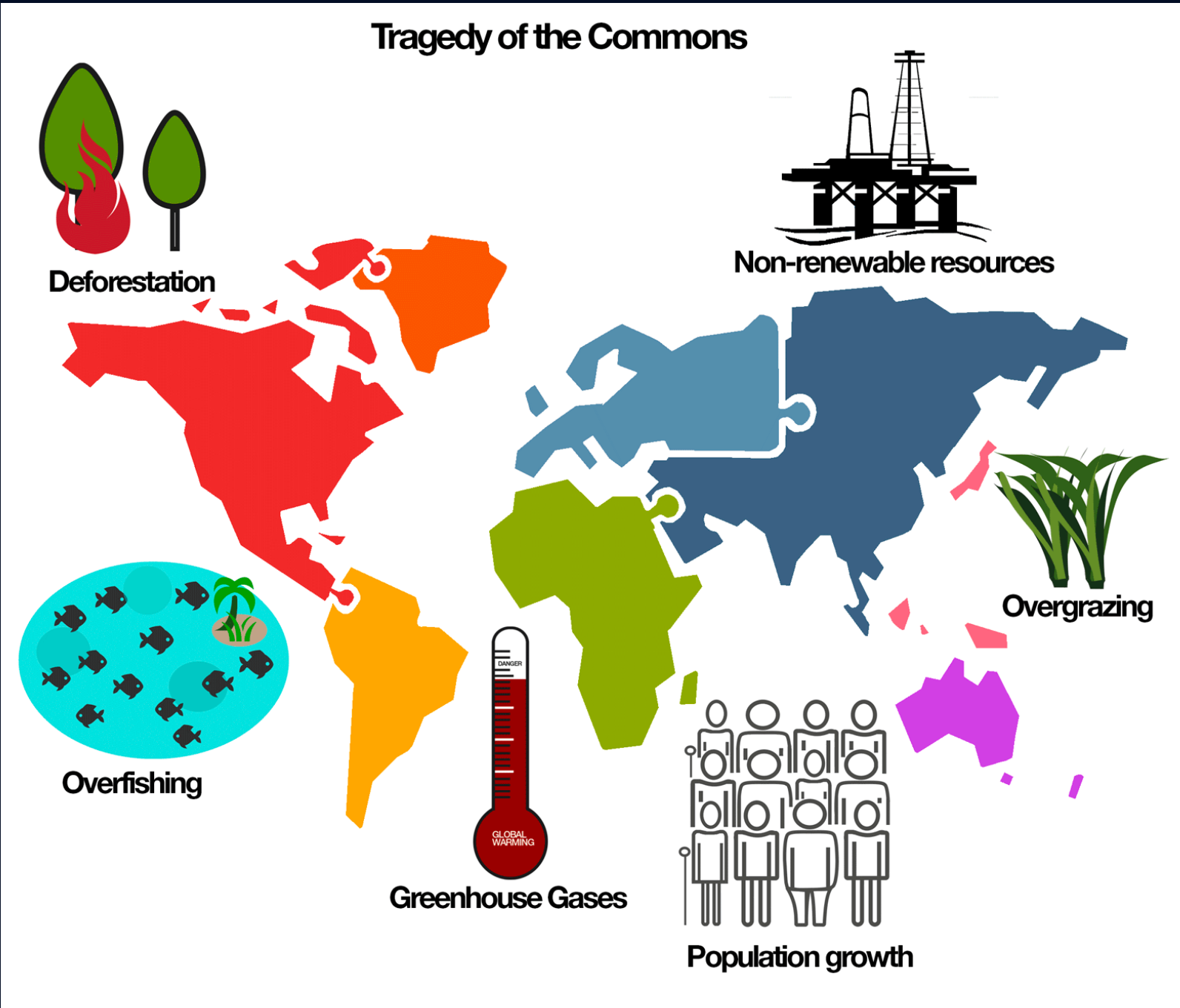-
We learned that in a free competitive market, when the price of a good adjusts to make quantity demanded equal to quantity supplied, the equilibrium quantity reflects the ‘best’ or optimal allocation of resources to the production of that good
-
This condition is known as allocative efficiency, achieved when marginal benefit equals marginal cost (MB=MC), or when social surplus is maximum
-
Market failure refers to the failure of the market to allocate resources efficiently
-
Market failure results in allocative inefficiency, where too much or too little of goods or services are produced and consumed from the point of view of what is socially most desirable
-
Over-provision (over-provided) of a good means too many/much resources are allocated to its production (over-allocation)
-
Under-provision means that too few resources are allocated to its production (under-allocation)
Market Failure: 3 Main Sources
- Public Goods and Common Resources
- Externalities
- Market Power
Public Goods and Common Resources
What is a Public Good?
- A useful way to classify different goods in the economy is to use 2 criteria (from a viewpoint of allocative efficiency):
- Rivalry(rival in consumption)
- Does consumption by one person reduce supply available to other users?
- Increase in consumption by one consumer leads to a fall in total supply of the good
- Excludability
- Whether a good is excludable - is it possible to exclude a non-payer from consuming to good to service?
- Exclusion of consumers is made possible, or is not costly
- Rivalry(rival in consumption)
Private Goods
- Rivalrous in consumption
- Consumption by one person reduces its availability for someone else
- Excludable in consumption
- It is possible to exclude people from using the good
- Usually achieved by charging a price
- People who refuse to or cannot pay the price are excluded
- Since most goods are rivalrous, and excludable, most goods are private goodds
Public Goods
- Goods that are non-rival and non-excludable are also known as pure public goods
- Non-rival in consumption
- Non-excludable in consumption
- Free rider problem
- No demand (price signals)
- No supply
- Hence no market arises (via price mechanism)
- Provide significant social benefits
- E.g., lighthouse
- Socially desirable
Public Goods and the Free Rider Problem
Excludable Goods
- It is possible to prevent people from buying and using a good simply by charging a price for it; those who do not pay the price do not buy it and do not get to use it
- Therefore., private firms have an incentive to provide excludable goods because they can charge a price for them, and therefore can cover their costs Non-Excludable Goods
- If a non-excludable good were to be produced by a private firm, people could not be prevented from using it even though they would not pay for it
- Yet no profit-maximising firm would be willing to produce a good it cannot sell at some price
- As a result, the market fails to produce goods that are non-excludable, giving rise to resource misallocation, as no resources are allocated to the production of public goods The Free Rider Problem
- Arises from non-excludability, people cannot be excluded from using the good
- Public goods are a type of market failure, because due to the free rider problem, private firms do not produce these goods: the market fails to allocate resources to their production
Common Access Resources
- A category of market failure is Common Access Resources (CARs)
- Not owned by any private individual or firm, so do not have a price, but are available for anyone to use without direct payment
- Hence, without government intervention, these resources are vulnerable to overuse and abuse
- E.g., fisheries, irrigations, rivers, forests, atmosphere
- Even for renewable resources, such as fish stocks, the overuse of these resources can lead to a long-term decline beyond the sustainable level in the stock of natural capital
- Non-excludable
- As they are freely available, there tends to be over-consumption of such resources
- Hence, common access resources are difficult to sustain, which is why governments intervene to prevent the depletion or destruction of such goods
- Rivalrous
- Consumption of these resources diminishes the quantity and possibly quality of remaining resources for the current and future generations to use
- In the case of over-consumption of CARs, sustainability becomes a real issue so generations to come may be deprived of any access to these resources
- Tragedy of the commons
- CARs create a situation known as the “Tragedy of the Commons”
- This means: Degradation, depletion or destruction of a CAR caused by the problems of overuse (or abuse) and over-consumption
